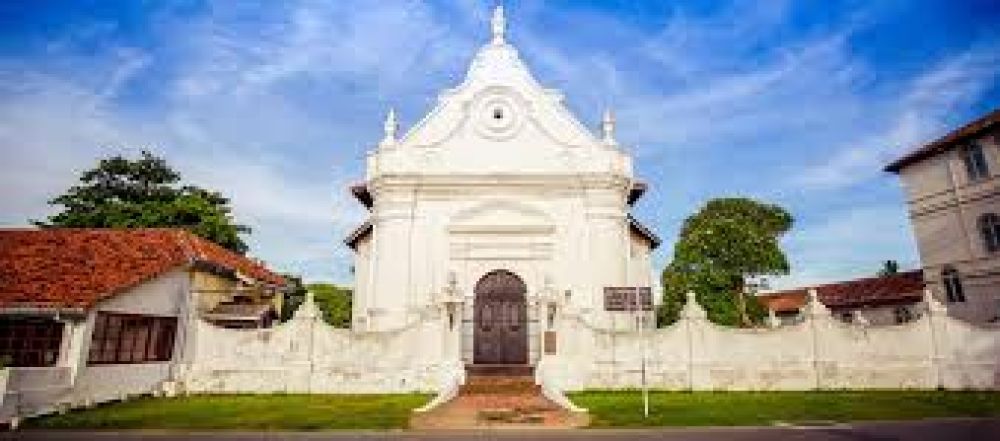

The Dutch Reformed Church, also known as the Groote Kerk, is situated in the heart of the Galle Fort, a UNESCO World Heritage Site in Sri Lanka. This historic church dates back to the 18th century and has become one of the key attractions for tourists visiting the southern coast of the island.
The church was built in 1755 by the Dutch East India Company, making it one of the oldest Protestant churches in Sri Lanka. The church is renowned for its Doric architecture, a testament to the period's colonial European influence and style, which remains well-preserved to this day. Notable features include the church's gabled roof, the intricately designed pulpit, and the old organ loft.
As the tourism industry in Sri Lanka developed, particularly towards the latter part of the 20th century, the Dutch Reformed Church grew in prominence as a historical and cultural site. Visitors were drawn to its colonial charm, peaceful ambiance and the surrounding cobbled streets of Galle Fort. It holds an allure for those interested in religious history, architecture, and the colonial past of Sri Lanka.
In recent years, the rise of cultural and heritage tourism has further enhanced the stature of the Dutch Reformed Church. Tourists are increasingly seeking authentic experiences and the chance to delve into the rich tapestry of history that places like the Galle Fort offer. The church, with its ancient gravestones, many of which belong to Dutch settlers, and its historical records, provides a window into the lives of the colonial occupants of the fort.
Sustainable Tourism Initiatives Sri Lanka's commitment to sustainable tourism has influenced the management of historical sites like the Dutch Reformed Church. Efforts are in place to preserve the church's integrity while accommodating the growing number of visitors. Balancing conservation with tourism has become a key focus, ensuring that the church and its surroundings are maintained for future generations.
Community Involvement Local communities play a crucial role in the tourism sector, and in Galle, there has been an emphasis on inclusive growth. This includes promoting local businesses, guiding services, and other tourism-related opportunities that allow the local population to benefit from the influx of tourists to the church and its environs.
Today, visitors to the Dutch Reformed Church can expect a serene experience, where they can learn about the Dutch colonial era, admire the architectural features, and enjoy the calm and spiritual atmosphere of the church. Guides are often available to provide a detailed history and point out significant aspects of the church that might otherwise be missed.
The Dutch Reformed Church in Galle, Sri Lanka, continues to be a pillar of the country's diverse historical and cultural landscape. Its blend of history, architecture, and the beauty of Galle Fort ensures that it remains a cherished destination for tourists from around the world. As a testament to its enduring appeal, it remains a vital part of the narrative that makes Galle, and Sri Lanka, a unique and enriching place to visit.